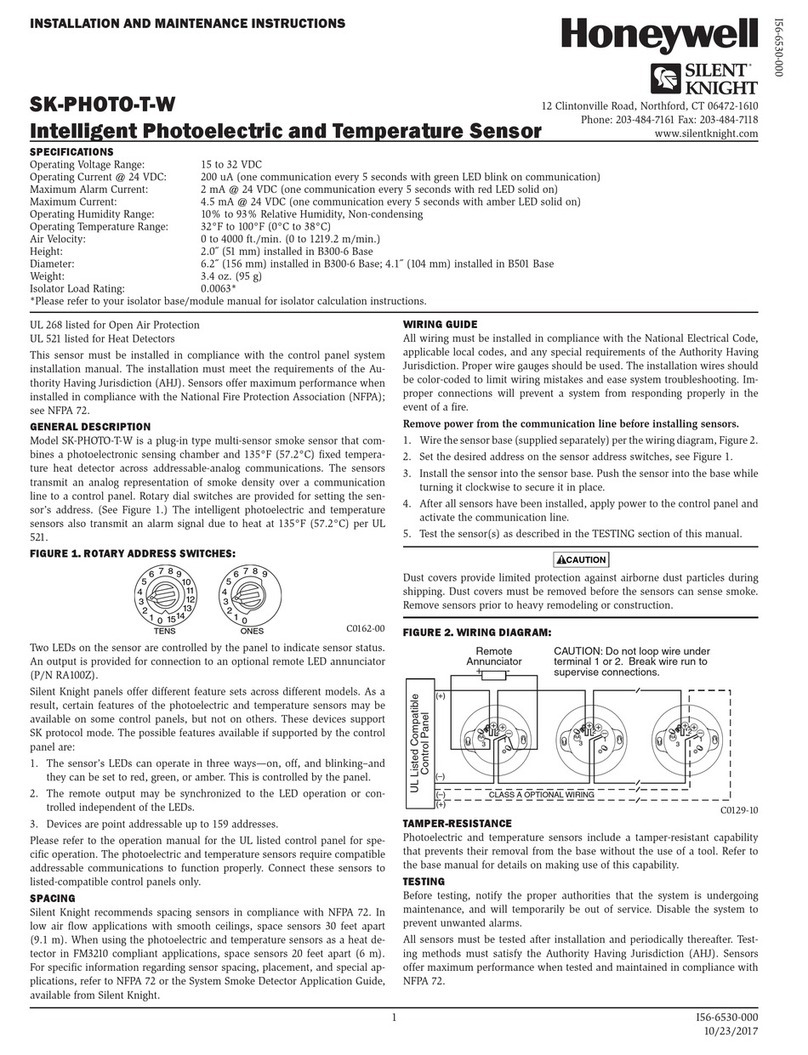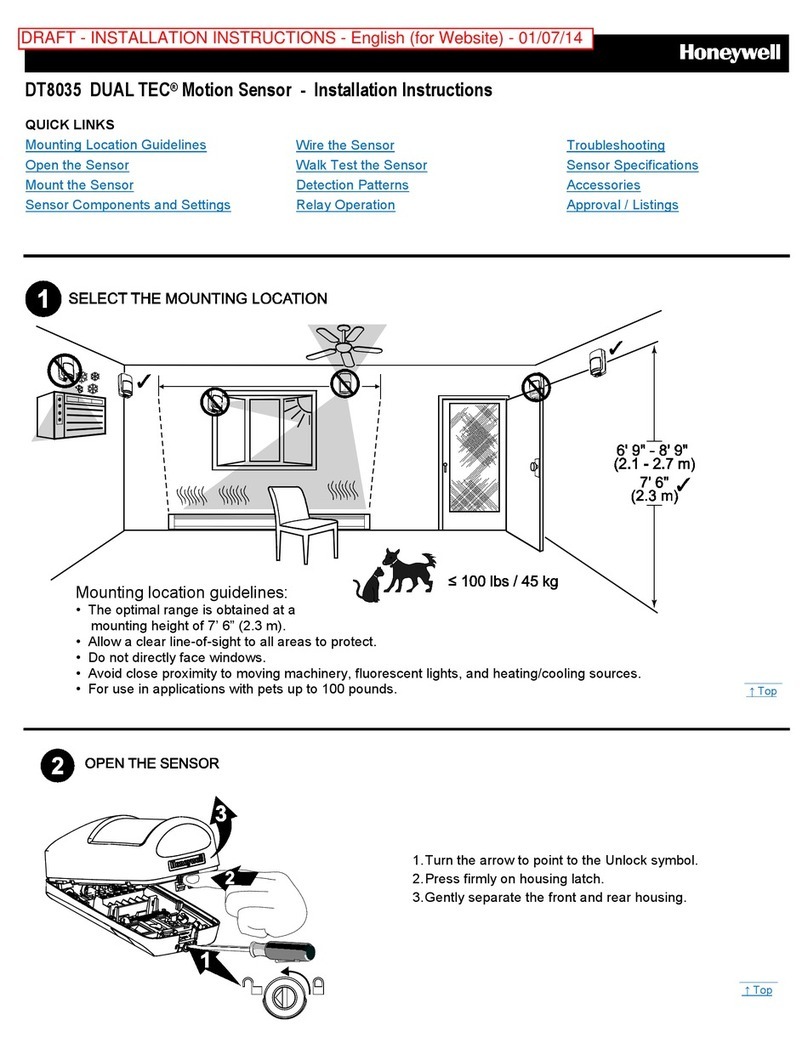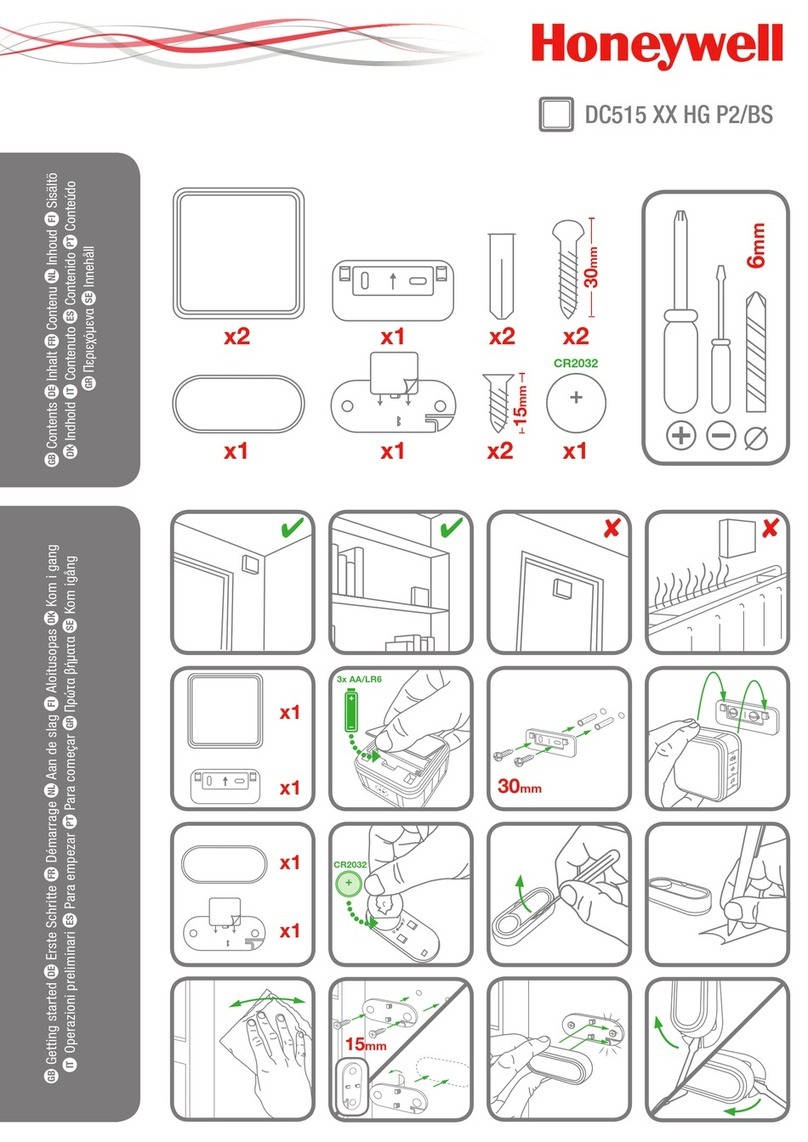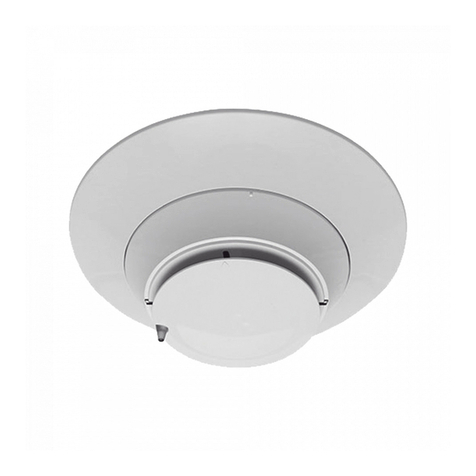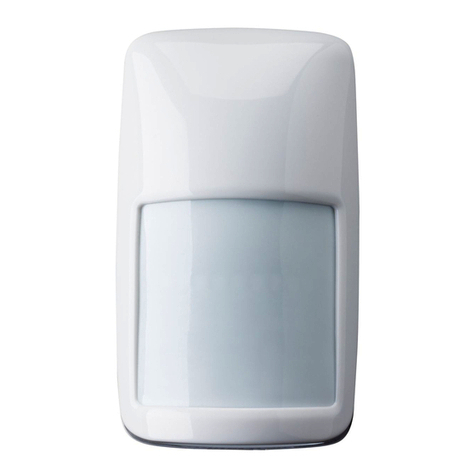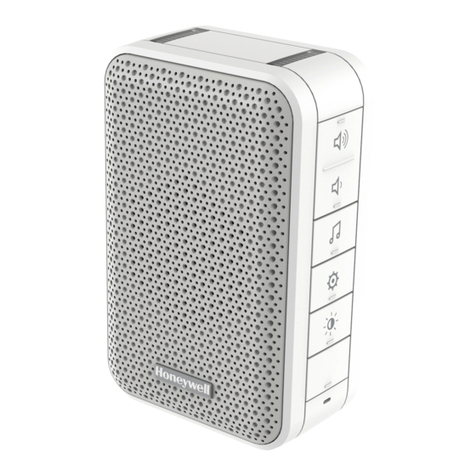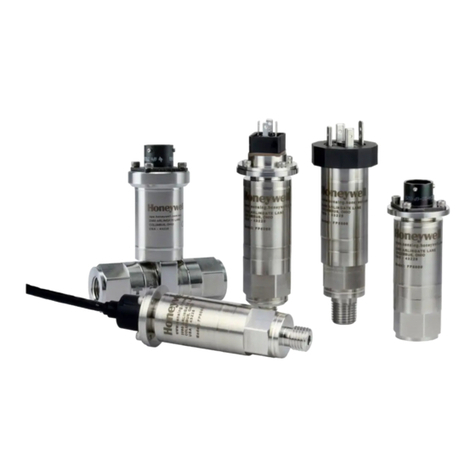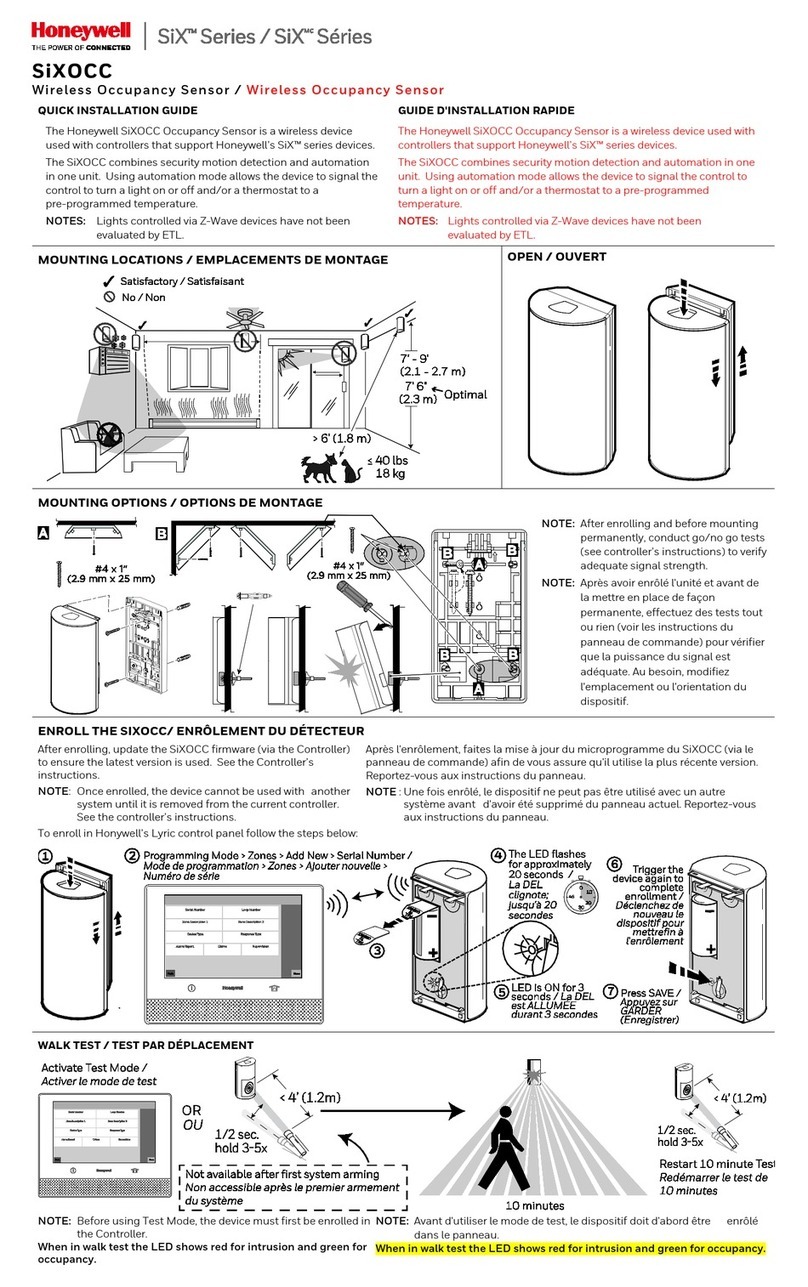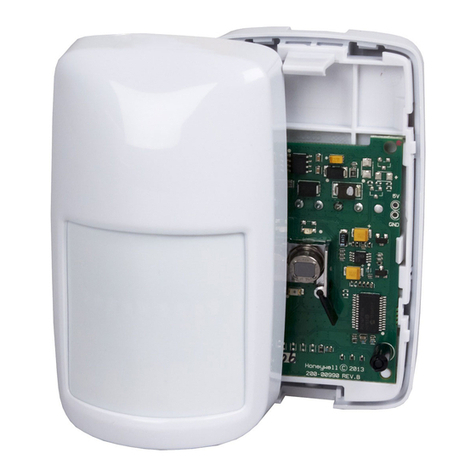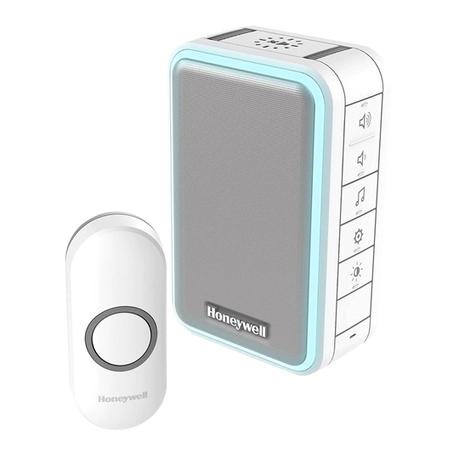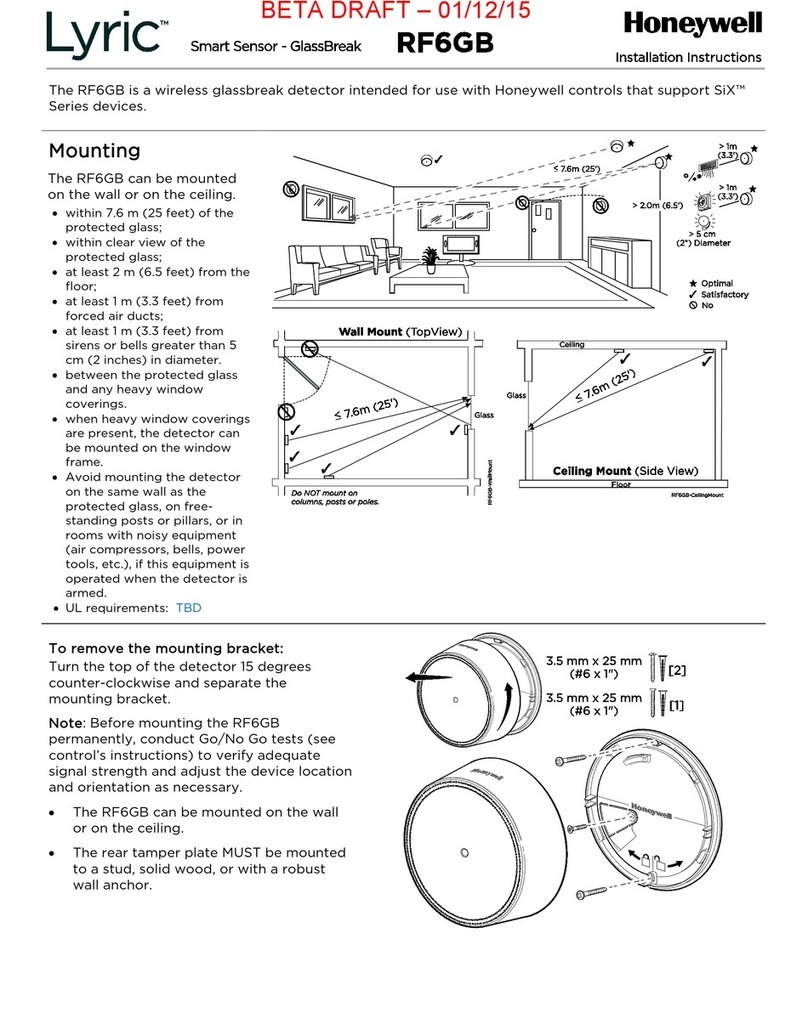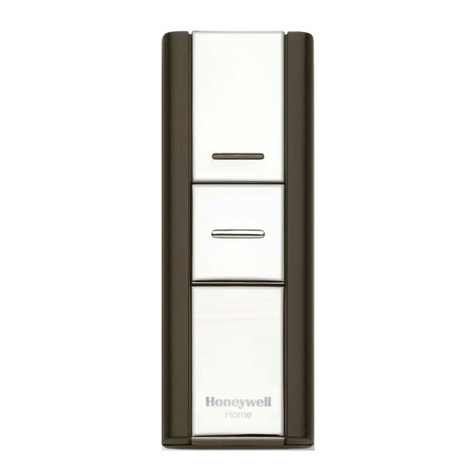
Pittway Tecnologica Srl, Via Caboto 19/3, 34147 Trieste, ItalyD700-02-01 I56-1653-013
Telecomando laser (Accessorio codice ECO1000RTU)
Nota: questo test non verifica completamente la funzionalità del rivelatore.
1. Allineare il fascio laser (punto lampeggiante rosso) prodotto dall’accessorio al LED
del rivelatore.
2. A condizione che il rivelatore non abbia raggiunto il limite della compensazione del
drift, dovrebbe andare in allarme in qualche secondo e il pannello di controllo
segnalare l'allarme.
MANUTENZIONE
1. Rimuovere dalla sua base il rivelatore da pulire.
2. Rilasciare con delicatezza i ganci che fissano la calotta alla parte interna del
rivelatore e rimuoverla.
3. Utilizzando un aspirapolvere, rimuovere con cura fibre e polvere che possono
essersi depositate sul coperchio della camera ottica.
4. Togliere il coperchio della camera ottica. Questa parte è disponibile come ricambio.
5. Utilizzando un aspirapolvere oppure dell'aria compressa, rimuovere fibre e polvere
dalla camera ottica e, in caso venga riutilizzato, dalla parte interna del coperchio.
6. Posizionare il coperchio della camera ottica nella sua sede (le frecce in basso rilievo
indicano il corretto orientamento) esercitando una moderata pressione per assicurarne
il fissaggio.
7. Rimontare la calotta del rivelatore (il foro per il LED sulla calotta indica il corretto
orientamento) assicurandosi che tutti i ganci trattengano correttamente la parte
interna del rivelatore.
8. Quando tutti i rivelatori sono stati puliti, alimentare il sistema e testare i rivelatori
come descritto nella sezione test
ATTENZIONE - LIMITAZIONI DEI RIVELATORI DI FUMO
I rivelatori di fumo funzionano solamente se collegati ad una centrale di controllo
compatibile ed operativa.
I rivelatori di fumo hanno limitazione di sensibilità. Non verrà dato allarme se il
fumo non raggiunge il rivelatore; differenti tipi di rivelatore si comporteranno in
maniera diversa ai vari tipi di fumo.
I rivelatori di fumo hanno una durata limitata, ne consigliamo la sostituzione ogni
10 anni.
INSTRUCCIONES DE MANTENIMIENTO E INSTALACION PARA
EL DETECTOR FOTOELECTRONICO DE HUMO ECO1003
ESPECIFICACIONES
Tensión de Alimentación: 8 - 30Vcc
Corriente en reposo: 45µA Típica @ 24VDC, 25°C
Máxima corriente en alarma: 80mA (limitada por la central o la resistencia, opcional,
colocada en la base)
Enclavamiento de la Alarma: Rearmado mediante supresión momentánea de la tensión
de alimentación.
Vea la Hoja de Características Técnicas de ECO1003 para posteriores detalles.
ADVERTENCIA - Las características del detector pueden variar según el fabricante
del producto. Compruebe la compatibilidad con el distribuidor de la central para
saber si existe alguna limitación, ej: La cantidad máxima de equipos por circuito.
MONTAJE DE LA BASE E INSTRUCCIONES DE CABLEADO
Vea las conexiones de los terminales en la figura 2a e 2b. La posición del LED se marca
con el símbolo del diodo y una flecha en la base (*).
Notas: No haga ramales con los cables comunes: Interrumpa el recorrido del hilo para
asegurar la supervisión de las conexiones.
Todo el conexionado deberá cumplir la normativa y reglamentos locales y
nacionales aplicables
Las bases ECO1000 disponen de una pestaña metálica de continuidad que se puede
utilizar para conectar los terminales 1 y 2, permitiendo así la comprobación del
cableado del lazo antes de la instalación de las cabezas detectoras. Esta pestaña se
desconecta automáticamente al acoplar el detector en la base.
AVISO - Desconecte la alimentación de la línea de los detectores antes de instalar
éstos.
INSTALACIÓN DEL DETECTOR
1. Sitúe el detector en su base y gírelo en sentido horario ejerciendo una ligera presión,
hasta que éste encaje en su sitio. Continúe girando hasta que la ranura del detector
quede alineada con las líneas marcadas en la base (véase la fig. 1**).
2. Una vez instalados los detectores conecte la alimentación de los circuitos de
monitorización de éstos.
3. Compruebe el detector según se describe en el apartado PRUEBAS.
Opción de seguridad antimanipulaciones (bloqueo de extracción del sensor).
Si se quita la pequeña solapa de plástico de la base, mostrada en la figura 1, se evita
que el detector se desconecte sin utilizar la herramienta.
PRECAUCIÓN - Es necesario retirar las cubiertas guardapolvo antes de llevar el
sistema al estado operacional.
PRUEBAS
Método de Humo
1. Utilice humo de prueba suministrado por un fabricante homologado, como No Climb
Products Ltd, aplicándolo de acuerdo con las instrucciones del fabricante.
2. A los pocos segundos el detector ha de quedar enclavado en el estado de alarma,
y se debe activar la alarma en el panel de control.
Método de Prueba con Láser (Modelo Núm. ECO1000RTU)
Nota: Este método no lleva a cabo una comprobación funcional completa del detector.
1. Alinee el punto rojo producido por el rayo láser con el LED del detector.
2. El detector entrará en alarma en unos segundos, siempre y cuando no esté en
avería o haya alcanzado el límite máximo de compensación por suciedad. Cuando
el detector entre en alarma, la central de incendios también indicará una alarma.
MANTENIMIENTO
1. Retire del sistema el detector que vaya a limpiar.
2. Libere con cuidado cada una de las lengüetas que sujetan la tapa del detector y
retire dicha tapa.
3. Limpie aspirando con cuidado la parte exterior de la pantalla sin desmontarla.
4. Desmonte con cuidado la pantalla de la cámara de detección. Existen tornillos de
repuesto disponibles.
5. Utilice un aspirador o aire comprimido limpio para eliminar el polvo y la suciedad de
la cámara de detección y del interior de la pantalla.
6. Reinstale la pantalla alineando la flecha grabada en ella con la flecha de la cámara
de detección, deslizando la pantalla sobre la cámara de detección y presionando
ligeramente para anclarla en su lugar.
7. Reinstale la tapa del detector. Alinee el LED con la tapa y encaje ésta en su sitio,
asegurándose de que las lengüetas de fijación de la tapa están ancladas
correctamente.
8. Cuando termine de limpiar todos los detectores, conecte la alimentación al circuito
y compruébelos según se describe en el apartado.
AVISO - LIMITACIONES DE LOS DETECTORES HUMO
El detector de humo sólo funcionará si está conectado a un panel de control
compatible y operacional.
Los detectores de humo también poseen limitaciones de detección. No detectarán
los fuegos en los que el humo no llega al detector, y los detectores de diferente tipo
responderán de diferente forma a los diversos tipos de humo.
Los detectores de humo tienen una duración limitada, y por ello nosotros
recomendamos su sustitución cada 10 años.
EINBAU- UNDWARTUNGSANWEISUNGEN FÜR FOTOELEKTRONISCHE
RAUCHMELDER, MODELL ECO 1003
SPEZIFIKATIONEN
Versorgungsspannung: 8 - 30 VDC
Ruhestrom: 55 µA typisch @ 24VDC, 25°C
Maximaler Alarmstrom:80 mA (begrenzt durch die BMZ oder den Widerstand im Sockel)
Alarmverriegelung: Wird durch kurzzeitige Unterbrechung der Stromversorgung z
urückgesetzt.
Weiterführende Informationen finden Sie im technische Datenblatt des Melders ECO1003.
WARNUNG! Die Melder-Charakteristik kann bei unterschiedlichen Herstellern
variieren. Überprüfen Sie die technischen Beschränkungen der
Brandmelderzentralen. Z.B: maximale Anzahl pro Kreis.
ANWEISUNGEN FÜR DEN EINBAU DES SOCKELS UND FÜR DIE VERDRAHTUNG
Die Anschlußbezeichnungen sind in Abb. 2a/2b angegeben. Die Position der Melder-LED
ist durch ein Diodensymbol und einen Pfeil an der Sockelwand gekennzeichnet. (*).
Hinweise: Schleifen Sie die Drähte an den Anschlußklemmen nicht durch: schneiden
Sie die Drähte durch, damit eine visuelle Kontrolle der Verbindungen möglich ist. Die
gesamte Anschlußverdrahtung muß den anwendbaren lokalen bzw. nationalen Vorschriften
entsprechen.
Die Sockel für die Melder ECO1000 sind mit einer Kurzschlußfeder ausgerüstet, die für
eine Verbindung zwischen den Anschlüssen 1 und 2 sorgt, so daß die Verdrahtung des
Loop vor dem Einsetzen der Melderköpfe überprüft werden kann. Dieser Federkontakt
wird automatisch geöffnet, wenn der Melder in den Sockel eingesetzt wird.
WARNUNG - Schalten Sie die Stromversorgung sämtlicher Überwachungskreise ab,
bevor Sie die Melder einsetzen.
EINBAU DER MELDER
1. Führen Sie den Melder in den Meldersockel ein und drehen Sie ihn mit leichtem Druck
im Uhrzeigersinn, bis er in die Aufnahme rutscht. Drehen Sie weiter, bis die Kerbe im
Melder mit der Markierung im Sockel übereinstimmt (siehe Abb. 1**).
2. Wenn Sie alle Melder eingebaut haben, schalten Sie die Stromversorgung der
Melderüberwachungskreise ein.
3. Testen Sie den Melder gemäß der Beschreibung unter TESTEN.
Ausbauschutz
Durch das Entfernen in Abb. 1 gezeigten Kunststofflasche wird verhindert, der Melderkopf
ohne Werkzeug entfernt werden kann.
VORSICHT - Vor der Inbetriebnahme des Systems müssen die
Staubschutzabdeckungen entfernt werden.
TESTEN
Rauch-Methode
1. Verwenden Sie zum Erzeugen von Testrauch ein Produkt eines anerkannten Herstellers,
z.B. No Climb Products Ltd, und benutzen Sie es entsprechend den Anweisungen
dieses Herstellers.
2. Der Melder wird, vorausgesetzt er hat das Ende der Messwertnachführung noch
nicht erreicht, sich innerhalb von einigen Sekunden in Alarm versetzen, wodurch
die BMZ einen Alarm auslösen wird.
Verfahren mit einem Laser-Testwerkzeug (Model Nr. ECO1000RTU)
Hinweis: Diese Methode erlaubt keinen vollständigen Funktionstest des Melders.
1. Richten Sie den blinkenden roten Punkt des Laserstrahls mit der LED am Melder aus.
2. Der Melder muß innerhalb weniger Sekunden in einen verriegelten Alarmzustand
gehen, und an der Brandmelderzentrale muß ein Alarm aktiviert werden.
WARTUNG
1. Entfernen Sie den zu reinigenden Melder aus dem System.
2. Lösen Sie vorsichtig die Ausbaulaschen, die die Abdeckung an ihrem Platz halten,
und nehmen Sie die Melder-Abdeckung ab.
3. Saugen Sie den Staub außen von der Abschirmung ab, ohne diese dafür auszubauen.
4. Nehmen Sie die Abschirmung vorsichtig aus der Meßkammer heraus.
Ersatzsabschirmungen sind lieferbar.
5. Benutzen Sie einen Staubsauger und/oder saubere Druckluft, um Staub und
Ablagerungen aus der Meßkammer und innerhalb der Abschirmung zu entfernen.
6. Bauen Sie die Abschirmung wieder ein, in dem Sie den darauf befindlichen Pfeil mit
dem Pfeil der Meßkammer in Übereinstimmung bringen; schieben Sie die Abschirmung
über die Kammer, üben Sie einen leichten Druck aus, um sie an ihrem Platz zu
arretieren.
7. Setzen Sie die Melder-Abdeckung wieder auf. Richten Sie die LED auf die
Abdeckeinheit aus und lassen Sie die Abdeckung einschnappen; achten Sie dabei
darauf, daß alle Ausbaulaschen ordnungsgemäß eingreifen.
8. Wenn Sie alle Melder gereinigt haben, schließen Sie die Stromversorgung wieder an
den Überwachungskreis an, und testen. Sie den Melder, wie unter TESTEN oben
beschrieben.
WARNUNG - EINSCHRÄNKUNGEN FÜR RAUCHMELDER
Rauchmelder können nur funktionieren, wenn sie an eine betriebsbereite, kompatible Melderzentrale
angeschlossen sind.
Die Erkennungsmöglichkeiten sind für Rauchmelder begrenzt. Rauchmelder erkennen keinen
Brand, der dort ausbricht, wo der Rauch den Melder nicht erreicht, und unterschiedliche
Rauchmelder reagieren auf diverse Arten von Rauch unterschiedlich.
Rauchmelder haben keine unbegrenzte Lebensdauer, und wir empfehlen einen Austausch nach
10 Jahren.
ES
D



